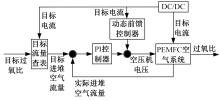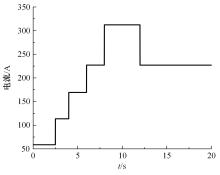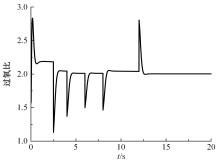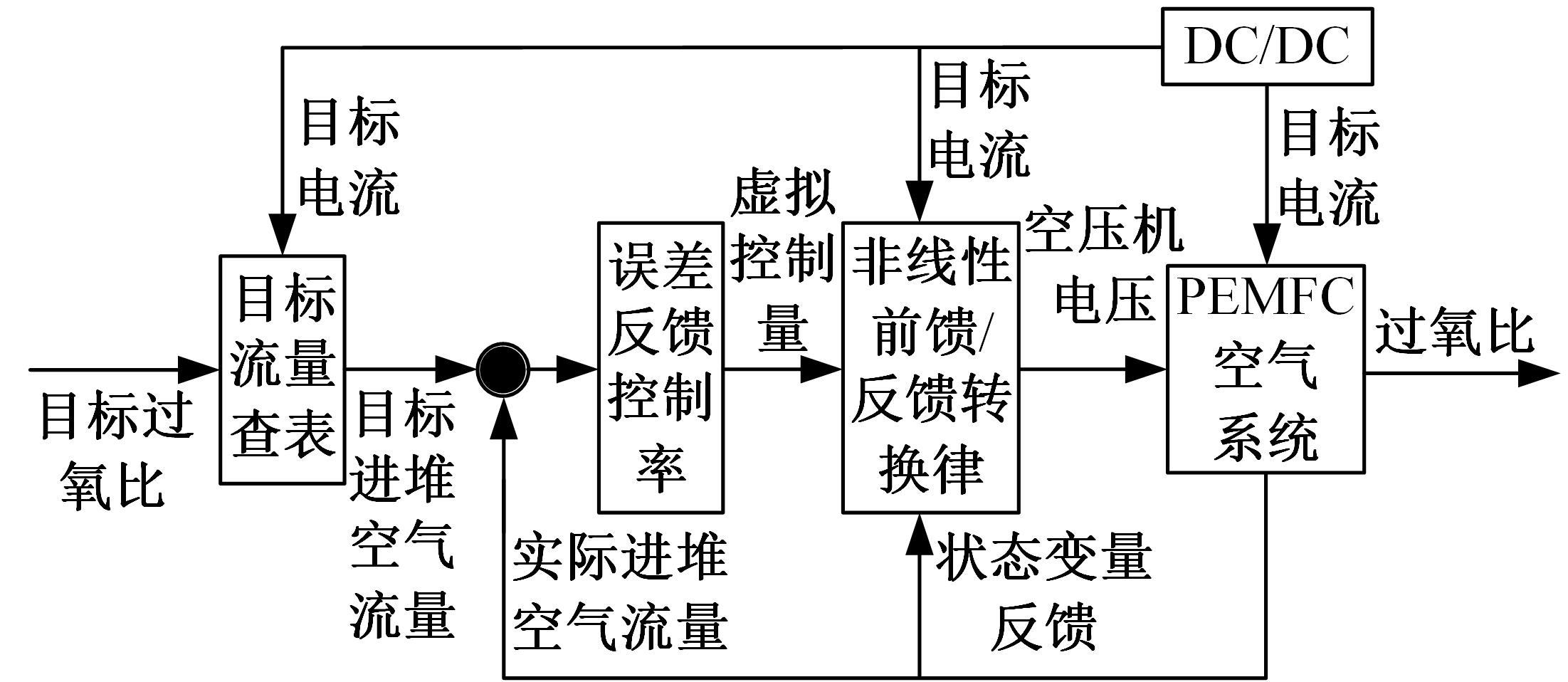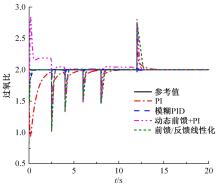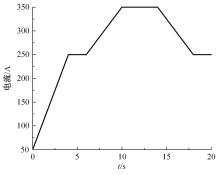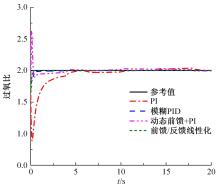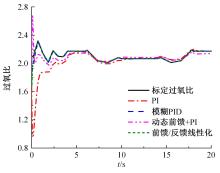Journal of Jilin University(Engineering and Technology Edition) ›› 2022, Vol. 52 ›› Issue (9): 1996-2003.doi: 10.13229/j.cnki.jdxbgxb20220345
Oxygen excess ratio control method of proton exchange membrane fuel cell air system for vehicle
Pei ZHANG1,2,3( ),Zhi-wei WANG1,2,3,Chang-qing DU1,2,3(
),Zhi-wei WANG1,2,3,Chang-qing DU1,2,3( ),Fu-wu YAN1,2,3,Chi-hua LU1,2,3
),Fu-wu YAN1,2,3,Chi-hua LU1,2,3
- 1.Hubei Key Laboratory of Modern Auto Parts Technology,Wuhan University of Technology,Wuhan 430070,China
2.Auto Parts Technology Hubei Collaborative Innovation Center,Wuhan University of Technology,Wuhan 430070,China
3.Hubei Technology Research Center of New Energy and Intelligent Connected Vehicle Engineering,Wuhan University of Technology,Wuhan 430070,China
CLC Number:
- TM911.4
| 1 | 王哲,谢怡,臧鹏飞,等. 基于极小值原理的燃料电池客车能量管理策略[J]. 吉林大学学报: 工学版,2020,50(1):36-43. |
| Wang Zhe, Xie Yi, Zang Peng-fei, et al. Energy management strategy of fuel cell bus based on Pontryagin's minimum principle[J]. Journal of Jilin University (Engineering and Technology Edition), 2020, 50(1): 36-43. | |
| 2 | Deng Z H, Chen Q H, Zhang L Y, et al. Weighted fusion control for proton exchange membrane fuel cell system[J]. International Journal of Hydrogen Energy, 2020, 45(30): 15327-15335. |
| 3 | Tang X, Wang C S, Hu Y K, et al. Adaptive fuzzy PID based on granular function for proton exchange membrane fuel cell oxygen excess ratio control[J]. Energies, 2021, 14(4): 1-18. |
| 4 | Li J W, Yu T. A new adaptive controller based on distributed deep reinforcement learning for PEMFC air supply system[J]. Energy Reports, 2021, 7: 1267-1279. |
| 5 | Li J W, Geng J, Yu T. Multi-objective optimal control for proton exchange membrane fuel cell via large-scale deep reinforcement learning[J]. Energy Reports, 2021, 7: 6422-6437. |
| 6 | Zhu J, Zhang P, Li X, et al. Robust oxygen excess ratio control of PEMFC systems using adaptive dynamic programming[J]. Energy Reports, 2022, 8: 2036-2044. |
| 7 | Yang D, Pan R, Wang Y J, et al. Modeling and control of PEMFC air supply system based on T-S fuzzy theory and predictive control[J]. Energy, 2019, 188: No. 116078. |
| 8 | Wang Y H, Li H T, Feng H M, et al. Simulation study on the PEMFC oxygen starvation based on the coupling algorithm of model predictive control and PID[J]. Energy Conversion and Management, 2021, 249: No. 114851. |
| 9 | Sun T, Zhang X, Chen B, et al. Coordination control strategy for the air management of heavy vehicle fuel cell engine[J]. International Journal of Hydrogen Energy, 2020, 45(39): 20360-20368. |
| 10 | Zhao D D, Xia L, Dang H B, et al. Design and control of air supply system for PEMFC UAV based on dynamic decoupling strategy[J]. Energy Conversion and Management, 2022, 253: No. 115159. |
| 11 | 马彦,朱添麟. 燃料电池空气供应系统非线性鲁棒控制[J]. 车用发动机,2021,43(1):9-17. |
| Ma Yan, Zhu Tian-lin. Nonlinear robust control of fuel cell air supply system[J]. Vehicle Engine, 2021, 43(1): 9-17. | |
| 12 | Pukrushpan J T. Modeling and control of fuel systems and fuel processors[D]. Michigan: The University of Michigan, 2003. |
| 13 | Suh K W. Modeling, analysis and control of fuel cell hybrid power systems[D]. Michigan: The University of Michigan, 2006. |
| 14 | Talj R J, Hissel D, Becherif M, et al. Experimental validation of a PEM fuel-cell reduced-order model and a moto-compressor higher order sliding-mode control[J]. IEEE Transactions on Industrial Electronics, 2010, 57(6): 1906-1913. |
| 15 | 李琳琳,赵长安,杨国军,等. 具有可测干扰非线性系统的前馈/反馈线性化[J]. 电机与控制学报,2000,4(1):31-34. |
| Li Lin-lin, Zhao Chang-an, Yang Guo-jun, et al. Feedforward/feedback linearization of nonlinear systems with measurable disturbances[J]. Electric Machines and Control, 2000, 4(1): 31-34. |
| [1] | Xun-cheng CHI,Zhong-jun HOU,Wei WEI,Zeng-gang XIA,Lin-lin ZHUANG,Rong GUO. Review of model⁃based anode gas concentration estimation techniques of proton exchange membrane fuel cell system [J]. Journal of Jilin University(Engineering and Technology Edition), 2022, 52(9): 1957-1970. |
| [2] | Kui-yang WANG,Ren HE. Recognition method of braking intention based on support vector machine [J]. Journal of Jilin University(Engineering and Technology Edition), 2022, 52(8): 1770-1776. |
| [3] | Qing GAO,Hao-dong WANG,Yu-bin LIU,Shi JIN,Yu CHEN. Experimental analysis on spray mode of power battery emergency cooling [J]. Journal of Jilin University(Engineering and Technology Edition), 2022, 52(8): 1733-1740. |
| [4] | Han-wu LIU,Yu-long LEI,Xiao-feng YIN,Yao FU,Xing-zhong LI. Multi⁃point control strategy optimization for auxiliary power unit of range⁃extended electric vehicle [J]. Journal of Jilin University(Engineering and Technology Edition), 2022, 52(8): 1741-1750. |
| [5] | Jun-cheng WANG,Lin-feng LYU,Jian-min LI,Jie-yu REN. Optimal sliding mode ABS control for electro⁃hydraulic composite braking of distributed driven electric vehicle [J]. Journal of Jilin University(Engineering and Technology Edition), 2022, 52(8): 1751-1758. |
| [6] | Shuai HAO,Chuan-tai CHENG,Jun-nian WANG,Jun-yuan ZHANG,You YU. Ergonomic optimization and test evaluation of sports SUV cockpit layout design [J]. Journal of Jilin University(Engineering and Technology Edition), 2022, 52(7): 1477-1488. |
| [7] | Jia-xu ZHANG,Chong GUO,Chen WANG,Jian ZHAO,Xin-zhi WANG. Performance evaluation of automatic parking system based on hardware in the loop simulation platform [J]. Journal of Jilin University(Engineering and Technology Edition), 2022, 52(7): 1552-1560. |
| [8] | Hong-bo YANG,Wen-ku SHI,Zhi-yong CHEN,Nian-cheng GUO,Yan-yan ZHAO. Optimization of tooth surface modification based on a two-stage reduction gear system [J]. Journal of Jilin University(Engineering and Technology Edition), 2022, 52(7): 1541-1551. |
| [9] | Guang-ming NIE,Bo XIE,Yan-tao TIAN. Design of cooperative adaptive cruise control algorithm based on Frenet framework [J]. Journal of Jilin University(Engineering and Technology Edition), 2022, 52(7): 1687-1695. |
| [10] | Chen HUA,Run-xin NIU,Biao YU. Methods and applications of ground vehicle mobility evaluation [J]. Journal of Jilin University(Engineering and Technology Edition), 2022, 52(6): 1229-1244. |
| [11] | Xiong LI,Feng-chong LAN,Ji-qing CHEN,Fang TONG. Comparison of injuries in front impact between Hybird III dummy model and CHUBM human biomechanical model [J]. Journal of Jilin University(Engineering and Technology Edition), 2022, 52(6): 1264-1272. |
| [12] | Ying-chao ZHANG,Yun-hang LI,Zi-yu GUO,Guo-hua WANG,Zhe ZHANG,Chang SU. Optimization of the aerodynamic drag reduction of a cab behind engine vehicle [J]. Journal of Jilin University(Engineering and Technology Edition), 2022, 52(4): 745-753. |
| [13] | Wen-ku SHI,Shu-guang ZHANG,You-kun ZHANG,Zhi-yong CHEN,Yi-fei JIANG,Bin-bin LIN. Parameter identification of magnetorheological damper model with modified seagull optimization algorithm [J]. Journal of Jilin University(Engineering and Technology Edition), 2022, 52(4): 764-772. |
| [14] | Jie LI,Tao CHEN,Wen-cui GUO,Qi ZHAO. Pseudo excitation method of vehicle non-stationary random vibration in space domain and its application [J]. Journal of Jilin University(Engineering and Technology Edition), 2022, 52(4): 738-744. |
| [15] | Wei LI,Hai-sheng SONG,Hao-yu LU,Wen-ku SHI,Qiang WANG,Xiao-jun WANG. Linear identification method of hysteresis characteristic of composite leaf springs [J]. Journal of Jilin University(Engineering and Technology Edition), 2022, 52(4): 829-836. |
|
||
